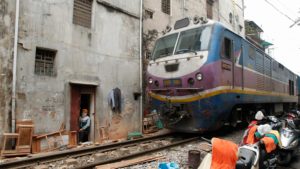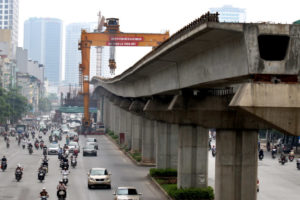
Vietnam revives $58bn high-speed north-south rail project despite cost hurdle
Hanoi seeks funding plan for north-south line serving economy and unity
16 January 2019
Vietnam has resurrected a high-speed rail project intended to link the country’s north and south, but the fiscal concerns that killed the proposal earlier this decade continue to haunt government efforts to fund the $58 billion plan.
The express railway would connect the capital of Hanoi in the north with commercial center Ho Chi Minh City in the south, slashing travel time from over 30 hours by conventional rail to five and a half hours via trains capable of traveling 350 kph. A one-way trip would cost $50 to $90, a source said, or about half the price of a plane ticket.
The roughly 1,560-km line would open in stages as soon as 2030, starting with a 280-km link between Hanoi and Vinh as well as a 360-km portion connecting Ho Chi Minh City and coastal Nha Trang. The rest of the line would be constructed gradually using revenue from the sections in service, with the project expected to be completed in 2045.
Most travelers between Hanoi and Ho Chi Minh City opt for flights. About 7 million people yearly use the roughly 50 daily flights between the two cities, creating the busiest domestic route in Southeast Asia and the seventh busiest in the world, U.K.-based research firm OAG says. But a high-speed connection could revive the economies of cities along the line and draw tourists to those locations.
Vietnam’s government plans to submit relevant bills to the National Assembly in October. Consultants hired by the Transport Ministry completed a feasibility study by the end of last year. Japan’s government is cooperating with the study, hoping to sell shinkansen trains for the project. The Transport Ministry has teamed with other agencies such as the finance and planning ministries to determine how to secure funding.
The country first proposed the high-speed line in the early 2000s, aiming to break ground in 2014 and start service everywhere in 2035. The railway not only offered an answer to demand from growing flocks of tourists, it also would symbolize unity in a country torn apart by the Vietnam War.
Japan provided help in developing the project at the time, and Vietnam had planned to use shinkansen technology. But the total costs, estimated then at $56 billion, proved too much for the government’s finances. The National Assembly rejected the proposal in 2010.
A later proposal called for slower trains running between 160 kph and 200 kph. But that alternative still carried a hefty price tag, and the whole rail project was put on ice.
In Vietnam’s one-party state, it is nearly unheard of for the National Assembly to reject legislation coming from the cabinet. The rejection apparently stemmed in part from an intraparty power struggle.

But in October, Communist Party General Secretary Nguyen Phu Trong was sworn in to his concurrent role as president. This greater sense of political stability has helped revive the rail project.
Yet the cost remains a barrier to completion. The central government is to foot 80% of the bill, while the private sector handles the rest. But Vietnam has set a sovereign debt ceiling at 65% of gross domestic product, and the public liability is nearing that limit. Hanoi has put curbs on public works projects and delayed their budget allocations. New projects financed by foreign development loans have essentially ceased.
Building the north-south rail line might require the state to incorporate a greater share of private funding or raise the 65% debt ceiling. Tokyo wishes to support the project through official development assistance financing, but such an offer faces strong resistance from Vietnam’s fiscal hawks.
Japan’s public and private sector remain interested in the rail project, including the government-backed Japan International Cooperation Agency, which assisted in the initial feasibility study, as well as trading corporations and train manufacturers.
“We have worked closely with the Vietnamese government up to now, and we would like to make this into a reality,” said a Japanese government insider.
Source: https://asia.nikkei.com/Economy/Vietnam-revives-58bn-high-speed-rail-project-despite-cost-hurdle


